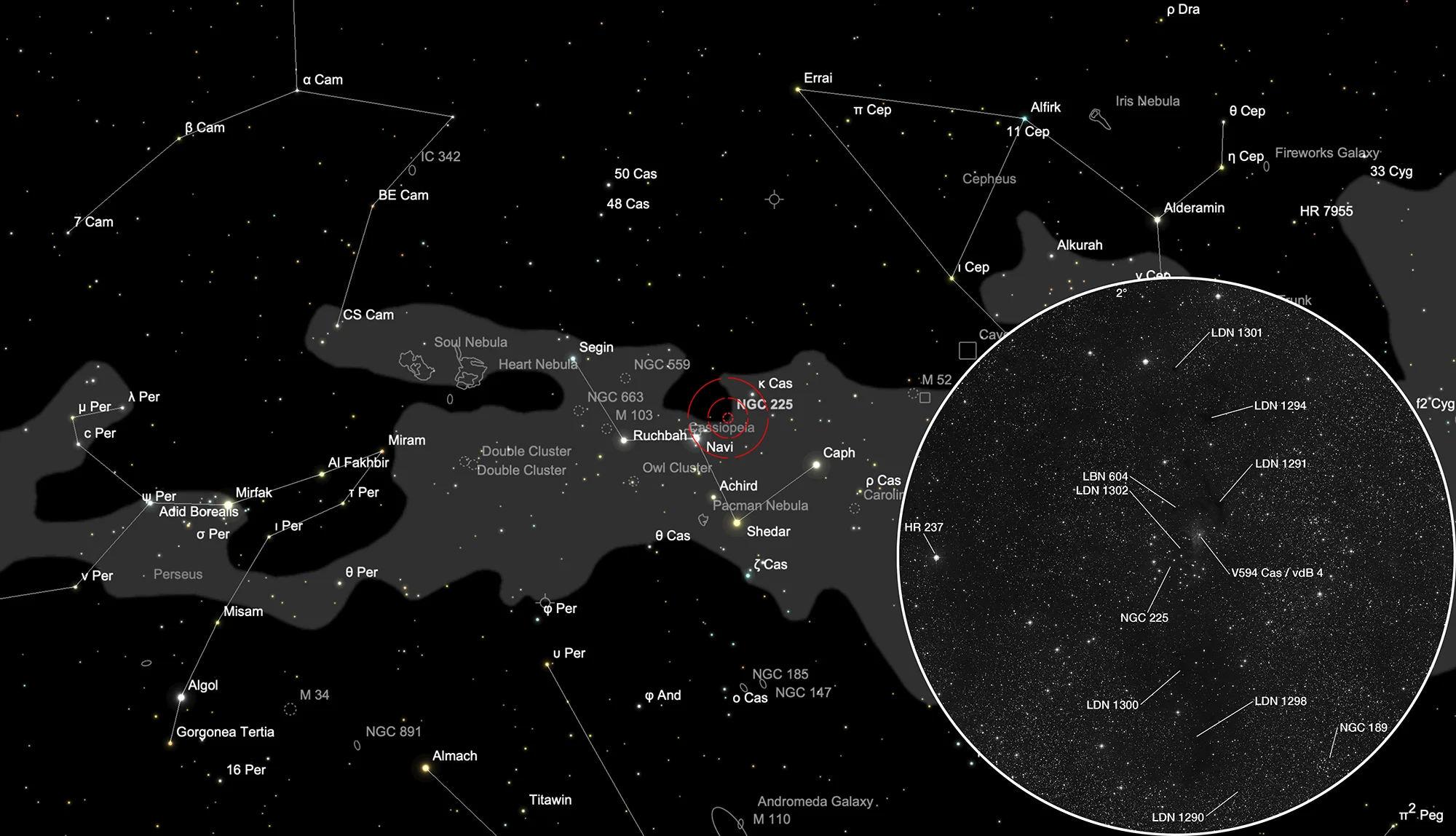Sailboat Cluster (NGC 225)

History
On 27 September 1783 Caroline Herschel discovered the open clusters NGC 225 along with NGC 189 using her 4.2-inch comet-seeker reflector. She described it as follows: «about 2° from Gamma Cas, making an isosceles triangle with Gamma and Kappa, a small cluster of stars, seeming to be intermixed with nebulosity.» [364]
William Herschel first observed the cluster on 12 March 1784, recorded it as VIII 78 and noted: «A cluster of very coarsely scattered large stars. Take up 15 or 20. Caroline Herschel discovered it 1784. [464]
In 1962 the American astronomer Beverly T. Lynds published her «Catalogue of Dark Nebulae» that she found on the blue and red photo plates of the «National Geographic Palomar Observatory Sky Atlas». She identified several patches of dark nebulosity around cluster NGC 225. [473] In 1965 she published then her catalog of bright nebulae where she identified a small H II region with LBN 604. [270]
In 1966 the Canadian astronomer Sidney van den Bergh published his «Catalogue of Reflection Nebulae», which wa based on a survey on the photographic plates of the «Palomar Observatory Sky Survey». There he identified the reflection nebula vdB 4 with strong absorption around the star BD +61°154 (V594 Cas), but with the identification he was uncertain. [255]
Physical Properties
NGC 225 is a small loose open cluster with an estimated age of 130 million years. [138] It is embedded in some molecular dark clouds that partially reflect the light of cluster stars, which can be seen on photographs with very long exposure.
| Designation | NGC 225 |
| Type | OCL (III1p) |
| Right Ascension (J2000.0) | 00h 43m 36.0s |
| Declination (J2000.0) | +61° 46' 00" |
| Diameter | 15 arcmin |
| Visual magnitude | 7.0 mag |
| Metric Distance | 0.657 kpc |
| Dreyer Description | Cl, L, lC, st 9…10 |
| Identification, Remarks | WH VIII 78; h 52; GC 120; OCL 305 |
Finder Chart
The open cluster NGC 225 is located in the constellation Cassiopeia and is on 5 October in opposition to the Sun. From your location it can best be seen in the months June to February.
